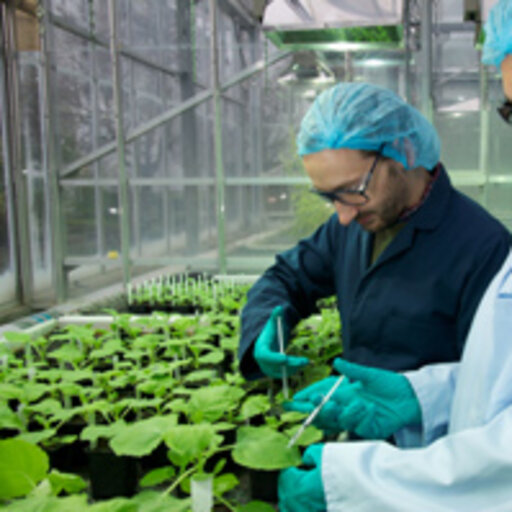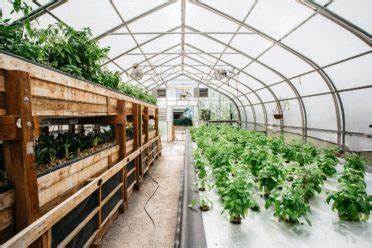
Vertical Farming and the Revival of Local Food Economies: An Overview
Introduction
Vertical farming has gained significant attention in recent years as an innovative agricultural technique. This concept involves growing crops in vertically stacked layers, utilizing advanced technologies such as hydroponics, aeroponics, and artificial intelligence. On the other hand, the revival of local food economies aims to strengthen community-based food systems and reduce dependence on global supply chains. This article provides an overview of vertical farming and its relevance in addressing food security, sustainability, and economic resilience.
Historical Background
The modern concept of vertical farming emerged in the 20th century with the pioneering work of Professor Dickson Despommier. However, the origin of vertical farming can be traced back to the Hanging Gardens of Babylon, one of the ancient wonders of the world. The decline of local food economies can be attributed to the industrialization of agriculture and the rise of large-scale monoculture farming. This shift led to the loss of small-scale farmers and the disconnect between consumers and the source of their food.
Key Concepts and Definitions
Vertical farming is the practice of growing crops in vertically stacked layers, utilizing controlled environments and advanced techniques. It aims to maximize food production efficiency while minimizing resource requirements. Local food economies, on the other hand, refer to the production, distribution, and consumption of food within a specific region or community. It emphasizes the importance of supporting local farmers, businesses, and consumers.

Main Discussion Points
Benefits of Vertical Farming
Increased food production efficiency and yield: Vertical farming allows for the cultivation of crops in a smaller footprint, resulting in higher yields per square meter compared to traditional farming methods.
Reduced water and land requirements: By utilizing techniques like hydroponics and aeroponics, vertical farming significantly reduces water usage and eliminates the need for fertile soil, making it suitable for urban areas.
Year-round and climate-independent production: Vertical farms can operate throughout the year, unaffected by seasonal changes or adverse weather conditions, ensuring a consistent supply of fresh produce.
Potential for organic and pesticide-free crops: Vertical farming provides a controlled environment that minimizes the use of pesticides and allows for organic crop production.
Revival of Local Food Economies
Strengthening local food systems and reducing dependence on global supply chains: Vertical farming enables communities to produce their own food, reducing reliance on imported goods and increasing food security.
Supporting small-scale farmers and local businesses: By promoting local food production, vertical farming creates opportunities for small-scale farmers and local businesses to thrive, stimulating the local economy.
Enhancing community engagement and food security: Vertical farms can be integrated into urban areas, bringing food production closer to consumers and fostering community engagement. This helps ensure access to fresh and nutritious food, particularly in food-insecure communities.
Environmental and social sustainability: Local food economies contribute to environmental sustainability by minimizing transportation emissions and supporting sustainable agriculture practices. They also promote social sustainability by creating jobs and fostering community resilience.

Integration of Technology and Innovation
Automation and robotics in vertical farming: Advanced technologies such as automation and robotics streamline the cultivation process, reducing labor requirements and increasing operational efficiency.
Artificial intelligence and data analytics for optimization: By harnessing artificial intelligence and data analytics, vertical farms can optimize crop growth conditions, resource usage, and pest management, leading to higher yields and reduced costs.
Integration of renewable energy sources for sustainable operations: Vertical farms can integrate renewable energy sources such as solar and wind power to reduce their carbon footprint and achieve energy sustainability.
Case Studies or Examples
Example: The Plant, Chicago
The Plant is a vertical farming project located in Chicago that aims to transform an old meatpacking facility into a sustainable food production and business incubator. This project has had a significant impact on the local food economy by providing fresh produce to the community, supporting local businesses, and creating job opportunities. Lessons learned from The Plant include the challenges of retrofitting existing infrastructure for vertical farming and the importance of community engagement in fostering the success of such initiatives.
Example: Agricool, Paris
Agricool is an urban farming startup based in Paris that utilizes recycled shipping containers to grow fruits and vegetables in the heart of the city. This innovative approach to local food production has revitalized urban spaces, reduced food miles, and increased access to fresh produce for city dwellers. Agricool’s use of recycled shipping containers showcases the potential for repurposing existing structures for vertical farming, making it a sustainable and scalable solution.
Current Trends or Developments
Adoption of vertical farming in urban areas: Vertical farming is gaining popularity in urban areas worldwide as it offers a solution to limited land availability and allows for the production of fresh food in close proximity to consumers.
Collaborations between vertical farms and local restaurants or markets: Vertical farms are increasingly partnering with local restaurants and markets to create a closed-loop food system, where produce is grown and consumed within the same community, reducing transportation and food waste.
Research advancements in crop selection and cultivation techniques: Ongoing research efforts are focused on improving crop varieties suitable for vertical farming and developing efficient cultivation techniques that maximize yield and quality.
Government initiatives and policies supporting local food economies: Many governments are recognizing the importance of local food economies and implementing policies to support and incentivize the establishment of vertical farms and the revival of local food systems.

Challenges or Controversies
High initial investment costs: The establishment of vertical farms often requires significant upfront investments in infrastructure, technology, and operational setup, making it challenging for small-scale farmers or entrepreneurs to enter the market.
Energy consumption and carbon footprint: Vertical farming relies on artificial lighting and climate control systems, which can contribute to high energy consumption and carbon emissions if not properly managed.
Regulatory issues and zoning restrictions: Existing regulations and zoning restrictions may pose challenges for the establishment and operation of vertical farms, particularly in urban areas.
Potential displacement of traditional farmers: The widespread adoption of vertical farming may result in the displacement of traditional farmers who are unable to compete with the high productivity and efficiency of vertical farms.
Future Outlook
Potential for scaling up vertical farming and its impact on the global food system: As technology continues to advance and costs decrease, vertical farming has the potential to play a significant role in meeting the increasing demand for food in a sustainable manner.
Integration of vertical farming with smart city concepts and urban planning: Vertical farming can be seamlessly integrated into smart city concepts, contributing to a sustainable and resilient urban environment.
Innovations in vertical farming technology and increased accessibility: Ongoing research and development efforts are focused on improving vertical farming technologies, making them more affordable, efficient, and accessible to a wider range of stakeholders.
Continued growth of local food economies and community resilience: The revival of local food economies will continue to gain momentum, fostering community resilience, and creating sustainable food systems that benefit both the environment and the economy.
Conclusion
Vertical farming and the revival of local food economies hold immense potential in addressing food security, sustainability, and economic resilience. By maximizing food production efficiency, supporting local farmers and businesses, and integrating technology and innovation, these concepts offer promising solutions to the challenges faced by our current food systems. As the world continues to grapple with global issues such as climate change and population growth, further exploration and research in this field are essential for a more sustainable and secure future.
References
Despommier, D. (2010). The vertical farm: feeding the world in the 21st century. Thomas Dunne Books.
Sanyé-Mengual, E., Orsini, F., & Gianquinto, G. (2015). A sustainability assessment of urban rooftop agriculture in Mediterranean cities. Sustainability, 7(4), 4266-4283.
Specht, K., & Siebert, R. (2019). Vertical farming: a systematic review on challenges and perspectives. Agronomy for Sustainable Development, 39(1), 22.
Li, X., & Kubota, C. (2009). Effects of supplemental light quality on growth and phytochemicals of baby leaf lettuce. Environmental and Experimental Botany, 67(1), 59-64.




